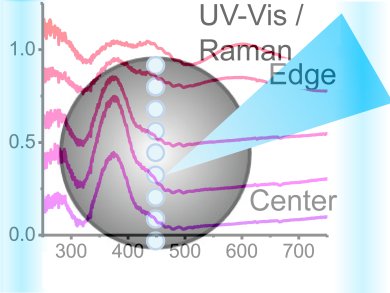Uniform microdistributions of active phases within a heterogeneous catalyst are not necessarily the optimum. Localized active sites can improve the catalyst performance. Bert Weckhuysen and co-workers, Utrecht University, The Netherlands, use UV/Vis and Raman spectroscopy to follow in-time the microdistributions of chromium ion complexes within cylindrical γ-Al2O3 pellets.
The speciation of CrIII and CrVI ions in the catalyst could be controlled by their respective precursor concentrations, the solution pH, and by addition of citric or phosphoric acid. Electrostatic interactions between the oppositely charged CrIII and CrVI complexes induced uniform, egg shell, egg white, or egg yolk microdistributions, named according to cross-sectional analysis of the alumina pellets.
An egg shell distribution formed, for example, if the CrIII complexes were hydrolyzed to Cr(OH)3 at the edge of the pellet. Attraction between CrVI and the positively charged support surface led to an egg white distribution, which became more uniform with increasing pH. Competitive adsorption of negatively charged phosphates onto the catalyst surface repulsed Cr ion complexes into the egg yolk center of the pellet.
- On the Microdistributions of Cr-Ion Complexes within mm-Sized γ-Al2O3 Catalyst Bodies upon Impregnation as Studied by UV/Vis and Raman Microspectroscopy,
M. W. Zandbergen, A. M. Beale, B. M. Weckhuysen,
ChemCatChem 2012, 4, 217–227.
DOI: 10.1002/cctc.201100333



